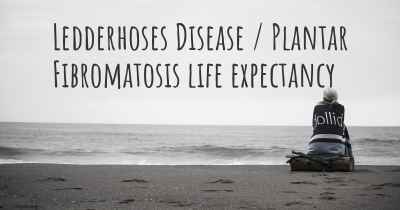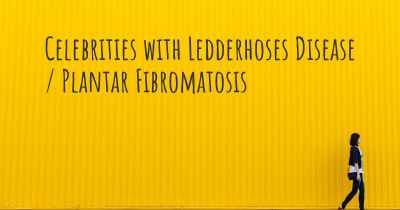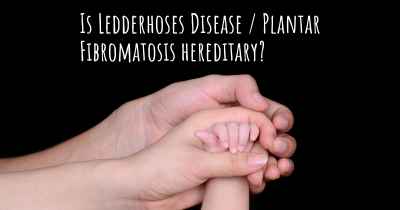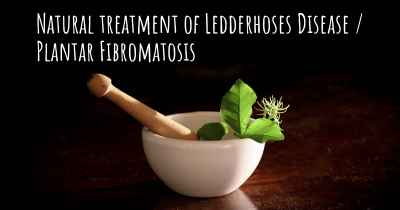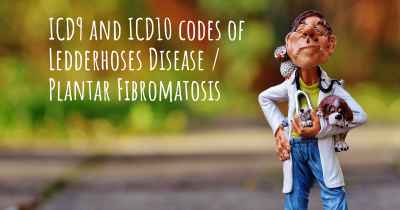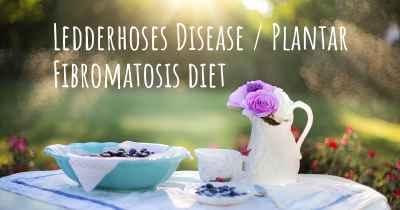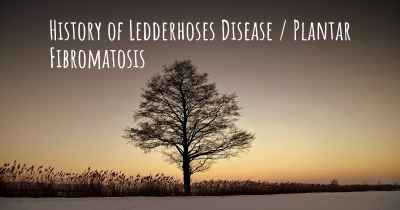Living with Ledderhoses Disease / Plantar Fibromatosis. How to live with Ledderhoses Disease / Plantar Fibromatosis?
Can you be happy living with Ledderhoses Disease / Plantar Fibromatosis? What do you have to do to be happy with Ledderhoses Disease / Plantar Fibromatosis? Living with Ledderhoses Disease / Plantar Fibromatosis can be difficult, but you have to fight to try to be happy. Have a look at things that other people have done to be happy with Ledderhoses Disease / Plantar Fibromatosis
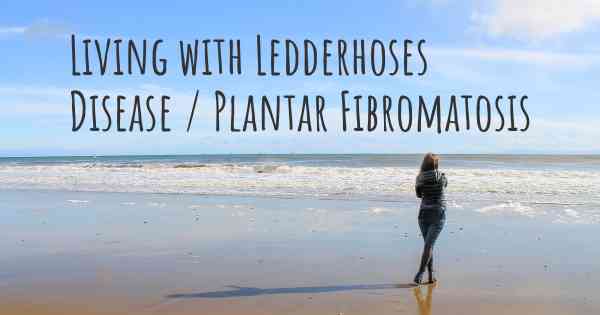
Living with Ledderhose's Disease / Plantar Fibromatosis
Ledderhose's Disease, also known as Plantar Fibromatosis, is a rare condition that affects the plantar fascia, the tissue on the bottom of the foot. It is characterized by the development of nodules or lumps in the arch of the foot, which can cause pain, discomfort, and difficulty walking. While there is no cure for Ledderhose's Disease, there are several strategies that can help individuals manage the symptoms and improve their quality of life.
1. Seek Medical Advice
If you suspect you have Ledderhose's Disease or are experiencing symptoms such as pain or lumps in your feet, it is important to consult with a healthcare professional. They can provide an accurate diagnosis, discuss treatment options, and offer guidance on managing the condition.
2. Understand the Condition
Educate yourself about Ledderhose's Disease to better understand its causes, progression, and available treatments. Knowledge about the condition will empower you to make informed decisions about your healthcare and lifestyle choices.
3. Wear Appropriate Footwear
Choosing the right footwear is crucial for managing Ledderhose's Disease. Opt for shoes that provide adequate support, cushioning, and stability. Avoid high heels, tight-fitting shoes, and styles that put excessive pressure on the arch of the foot. Orthotic inserts or custom-made shoes may also be recommended by your healthcare provider to provide additional support.
4. Manage Pain and Inflammation
Ledderhose's Disease can cause pain and inflammation in the affected area. Over-the-counter pain relievers, such as nonsteroidal anti-inflammatory drugs (NSAIDs), may help alleviate discomfort. However, it is important to consult with your doctor before taking any medication to ensure it is safe and appropriate for you.
5. Physical Therapy and Stretching
Physical therapy and stretching exercises can help improve flexibility, reduce pain, and maintain mobility. Your healthcare provider may recommend specific exercises or refer you to a physical therapist who can develop a personalized treatment plan to target the affected area.
6. Monitor and Manage Symptoms
Keep track of your symptoms, including any changes in pain, size, or mobility of the nodules. Regularly monitoring your condition will help you identify any worsening or improvement, allowing you to adjust your treatment plan accordingly. Communicate any changes to your healthcare provider.
7. Explore Non-Surgical Treatment Options
There are various non-surgical treatment options available for Ledderhose's Disease, such as radiation therapy, steroid injections, and extracorporeal shockwave therapy. These treatments aim to reduce pain, slow down the progression of the disease, and improve overall foot function. Discuss these options with your healthcare provider to determine if they are suitable for your specific case.
8. Supportive Measures
Living with Ledderhose's Disease can be challenging both physically and emotionally. Seek support from friends, family, or support groups who can provide understanding, empathy, and practical advice. Sharing experiences with others who have the same condition can be comforting and help you navigate the challenges more effectively.
9. Maintain a Healthy Lifestyle
Adopting a healthy lifestyle can have a positive impact on managing Ledderhose's Disease. Maintain a balanced diet, engage in regular physical activity within your limitations, and avoid habits such as smoking or excessive alcohol consumption, which can impair healing and overall health.
10. Regular Follow-ups
Stay in touch with your healthcare provider and schedule regular follow-up appointments to monitor the progression of the disease and evaluate the effectiveness of your treatment plan. Regular check-ups will ensure that any necessary adjustments can be made promptly.
Living with Ledderhose's Disease requires patience, perseverance, and a proactive approach to managing symptoms. By following these strategies and working closely with your healthcare provider, you can improve your quality of life and maintain optimal foot health.
